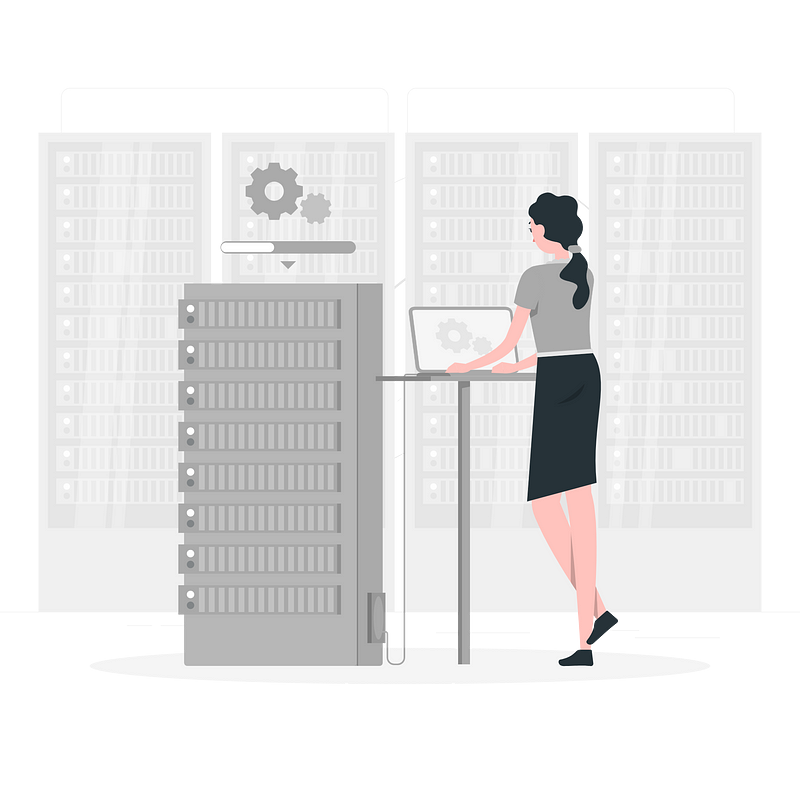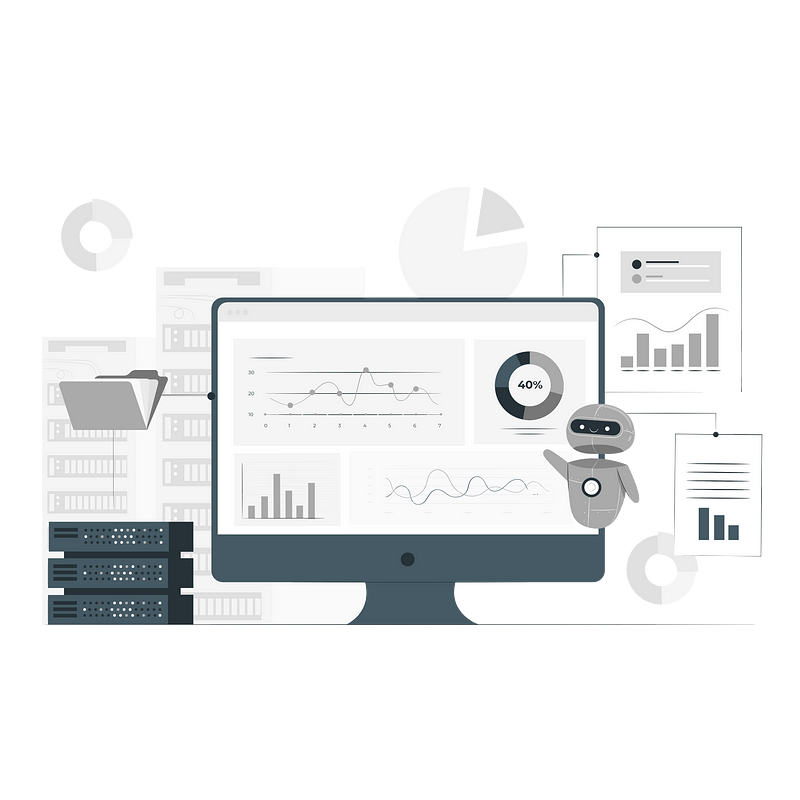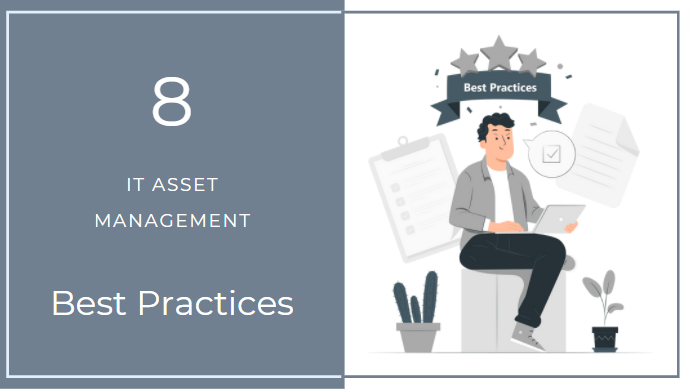IT-intensive organizations are increasingly solving their critical management challenges by implementing modern ITAM software. According to MarketWatch, the IT asset management market is expected to register a CAGR of 11.25% during the forecast period of 2018–2023.
To maximize the benefit of ITAM tool, it is important to learn and implement IT asset management best practices. Following are some of the challenges businesses can face if they don’t have well-defined IT asset management best practices in place:
- Without properly tracking the usage of your IT assets, you can acquire surplus inventory which drives up overhead costs. Conversely, a shortage of IT assets when there is a critical need can cause disruption in the business processes.
- Lack of an ITAM tool can result in mismanaged software assets. If your organization is using dozens of software tools, it can be extremely challenging to track every software license manually. This increases the risk of non-compliance and a vendor audit which can eventually lead to penalties and fines.
- IT assets are expensive and constitute a major portion of your IT investments. Not tracking them vigilantly can result in asset theft or misplacement which can quickly become a troubling overhead expense.
IT asset management best practices
Implementing an ITAM solution that aligns with your business needs can help alleviate some common IT asset management challenges.
Adopt these outcome-oriented best practices to ensure that your ITAM tool is a valuable component of your organization’s IT infrastructure and will help you get the maximum return on your IT investments.
1. Build an accurate IT inventory database

Detecting and identifying every part of your IT infrastructure helps you track your IT assets properly. Efficient IT asset management software come with multiple asset discovery sources that you can use to identify software, hardware, and network assets.
You will not only get information on which assets you have in your organization, but you will also get details on what kind of software is installed on devices and how the assets are being used.
A robust ITAM tool integrates with other business management tools to discover various software, hardware, and network assets. ITAM tools can be seamlessly integrated with multiple network discovery sources and they also come with a pre-deployed ITAM agent that helps you get information on every segment of your network from different software to peripherals like printers and headsets.
Along with giving you a virtual representation of your entire network, they also give you a 360-degree view of how your network is set up, eventually giving you more confidence in managing your IT infrastructure. A good ITAM tool also directs you towards loopholes and open ports so you can work on endpoint and patch management.
2. Adopt a lifecycle-based approach
Your IT asset management process should begin from the time of the purchase request of an asset and should end after the asset is retired and has properly been disposed of. Tracking an asset through every stage of its life cycle will increase its lifespan and will give you detailed information about its utilization.
Tracking an asset through its operational phase will enable proactive maintenance and retiring it through a standardized process will help you get the salvage value of an asset.
Your management team will also find the information helpful in procuring new assets based on the performance of a previous asset. They can determine if they need to switch vendor or asset models, or if the asset has provided the maximum return on their investment. IT asset management best practices involve following these phases through an asset’s lifecycle:
- Planning: You can derive and create interactive reports on different hardware devices used to properly plan the procurement of new devices. These reports give you metrics on the lifespan of already existing assets, their utilization, and phases.
- Procurement: You can choose a vendor from the list of vendors in your ITAM tool and can easily create a purchase order on an existing template in the software to place an order.
- Maintenance and servicing: The usage of an IT asset management tool helps you plan ahead for the servicing of hardware devices. You can schedule maintenance for hardware devices at regular intervals to increase the lifespan of your hardware investments.
- Retirement: As every organization has different retirement protocols, you can upload your retirement policy to your IT asset tracking software to ensure that every hardware asset has checked off the criteria during the retirement period.
- Disposal and replacement: Disposing of an asset usually makes way for the procurement of a new asset. You can update the status of a retired asset before placing a request for a replacement.
3. Integrate ITAM with other software tools

If your ITAM software blends in well with other components of your IT infrastructure, then it’ll help to improve various other processes. For instance, you can integrate your IT asset management solution with your ITSM software to enhance your service desk, endpoint management, CMDB, incident management protocols, change management, and more.
The data tracked by your ITAM tool will no longer reside in unreachable siloes but instead, can be shared across other tools, making up one comprehensive source of real-time information.
4. Internal audits
An increase in the remote work environment and hybrid culture has increased the risk of external audits for organizations that are heavily reliant on IT.
Organization-wide adoption of an ITAM solution doesn’t only help you gather information in case of a vendor audit but also helps you to conduct audits from within the organization so you can rectify the mistakes beforehand.
Your management can keep a close eye on the procurement and utilization of hardware assets, compliance of software licenses, number of software licenses being acquired, warranties, and expiries to make sure that everything is in perfect order.
This will eventually serve as a practice drill if there is an external audit. Accurate monitoring and tracking will save you from lawsuits and hefty fines.
5. Automate IT asset management processes

From setting custody verifications for high-value assets to alerts and notifications for important processes, you can automate extensively from within your ITAM system.
Automating processes will not only free up your time but will also enhance the precision tracking and security of your IT assets. Most IT asset management tools offer automated notifications for critical processes like asset discovery, license renewal, compliance issues, and any other upcoming event that you have added to the calendar.
6. Manage software licenses on your ITAM
To optimize the use of software licenses and to stay compliant, make sure that you are tracking their utilization through your ITAM tool. It will provide you with critical information like the type of licenses you own, when they expire, and if they are linked to any contracts.
You will also have information on the number of seats you have for a particular license and you can increase or decrease them based on the usage trends.
Software reconciliation will help you decrease your total cost of ownership and the real-time dashboards on software use will help you measure software compliance metrics.
An efficient IT asset management system helps you with the following software asset management processes:
- Software license management: The software license entitlement feature gives you information about installed software on every device, its usage, and compliance status. It helps you ensure that you are not violating any software license terms and conditions.
- Software costs: If you don’t have a dedicated ITAM tool, you run the risk of overspending. It is possible that you are spending money on licenses that aren’t being used extensively or that you are using expired licenses and will have to pay the penalty for non-compliance.
- Software reconciliation: To identify who is authorized to use which software and who has access to it can be determined easily with reconciliation features. With the help of an ITAM tool, you can easily compare the two records to see if the information is correct and hence, can get precise metrics on the utilization of every software.
7. Get regular reports

Most ITAM tools come with in-built report templates that your organization may need for strategic decisions. If not, you can create custom reports and pin them to your dashboards so you can regularly view and analyze trends on assets usage, procurement, ROI, compliance, and other such important key metrics.
These reports will help you come up with budgetary requirements for your IT needs, make effective purchase decisions, and will also help you in identifying the discrepancies in your IT environment.
8. Proactive approach with maintenance and servicing
Once you have standardized protocols for different processes, you can leverage your ITAM tool as a proactive approach rather than a reactive one. For example, if you are scheduling the service of your hardware assets on time, then it would reduce the risk of unexpected downtime and hence, reduce the risk of disrupted operations.
In the case of software assets, having timely alerts for software expiry and renewal also helps you to develop a proactive approach to staying compliant. As a bottom line, these best practices help you get the most out of your ITAM software and help you accomplish your IT asset management goals.
Read more: IT Asset Management: Functions, Benefits, And Implementation Of Dedicated Software
About AssetSonar
AssetSonar is the leading ITAM tool that supports multiple IT asset discovery sources to ensure a seamless, centralized IT asset management experience and fulfill the ITAM best practices. Sign up today for a free 15-day trial.
For more assistance, drop us an email at support@ezo.io. You can also visit our blog for detailed support posts.
Join the Conversation: Twitter | Facebook | LinkedIn







